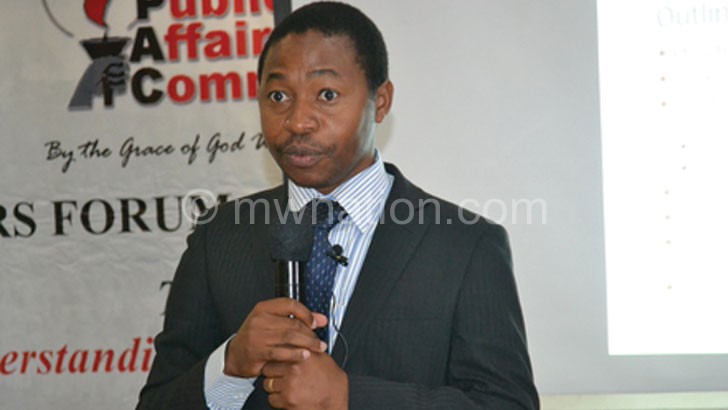Electricity penetration rate worries Mera
The Malawi Energy Regulatory Authority (Mera) has bemoaned the low levels of electricity penetration—currently at 10 percent—and would seek other means to improve the situation.
In an interview with Business News on Tuesday, Mera chief executive officer, Raphael Kamoto said the authority is planning to create electricity generation and diversify onto other energy sources.

“The current electricity penetration of between 9.8 and 10 percent is quite low, but we are hoping to move up to 40 percent in the next 20 years. We need to have a power plant up north, use other sources of energy to provide power to our communities and we also need to diversify. For example, the coal fired plant initiative in Neno is all about diversification,” he said.
Currently, the Electricity Supply Corporation of Malawi (Escom) has an installed capacity of 351 megawatts—most of which is generated on water powered plants on the Shire River—which is inadequate for the country.
Escom recently disclosed that it plans to construct a six megawatts diesel-powered plant at Katoto in Mzuzu to carter for the Northern Region and a 16 megawatts plant for the south.
Kamoto, however, said despite the low penetration, Malawi electricity tariffs remain competitive in the region.
“The perceived high cost of electricity in the sector is determined by financing as well as equipment that is used for electricity generation. The tariffs reflect the cost of equipment and funding that gets into the generation process.
“Currently, if we look at the 10 cents per kilowatt hour for the hydroelectricity, it compares favourably with what other countries within the region are charging,” he said.
Kamoto, however, says Mera is not happy with investments being made in the sector to redeem the situation.
“We created the electrify grid code, with its set procedures which investors in the sector would be using whenever they want to make investments. It was approved by the board in January 2015, but soon we will be taking it back to the stakeholders for familiarisation.
“We are not happy with the fact that we don’t have a lot of investors in the electricity sector. What we need to do now is publicise the reforms happening in the sector as well as review policies which will soon be tabled in Parliament as a way of encouraging independent power producers to invest in the energy sector,” he said.
In its recent Business Climate Survey 2015, the Malawi Confederation of Chambers of Commerce and Industry (MCCCI) said that power outages remain a hindrance to doing business in the country.
With 9.8 percent or roughly thereabout, Malawi has one of the lowest access rates to electricity in sub-Sahara, with the region in general having an access rate of 22 percent whereas South Asia stands at 60 percent and Latin America at 80 percent.
Access to electricity is directly linked to levels of development and economic growth.





Mr Kamoto,why talk about 20 years? That’s too far. You can reduce that to five years. It needs political will. Unfortunately, you are not in govt or Escom, so we will not believe you.
This should be coming from Escom or Minister of Energy not regulator. You are not at operation level.
Malawi has abundant coal. It can have huge coal plants in all the 3 regions, but we have myopic leaders. When we add regionalsim it becomes worse.
In South Africa 95% of electricity is from coal. They about to complete Medupi Power Station which contribute more than 4700 MW. Malawi Kugona basis. They started building the power plant in 2008 and part of the project is operational. So why talk of 20 years?